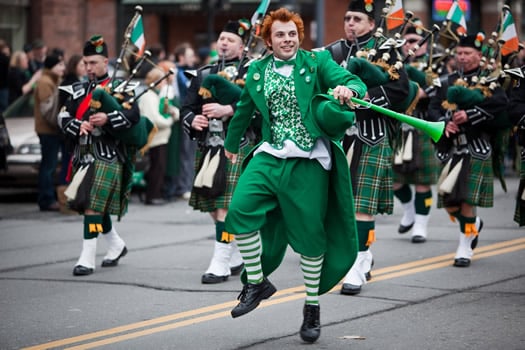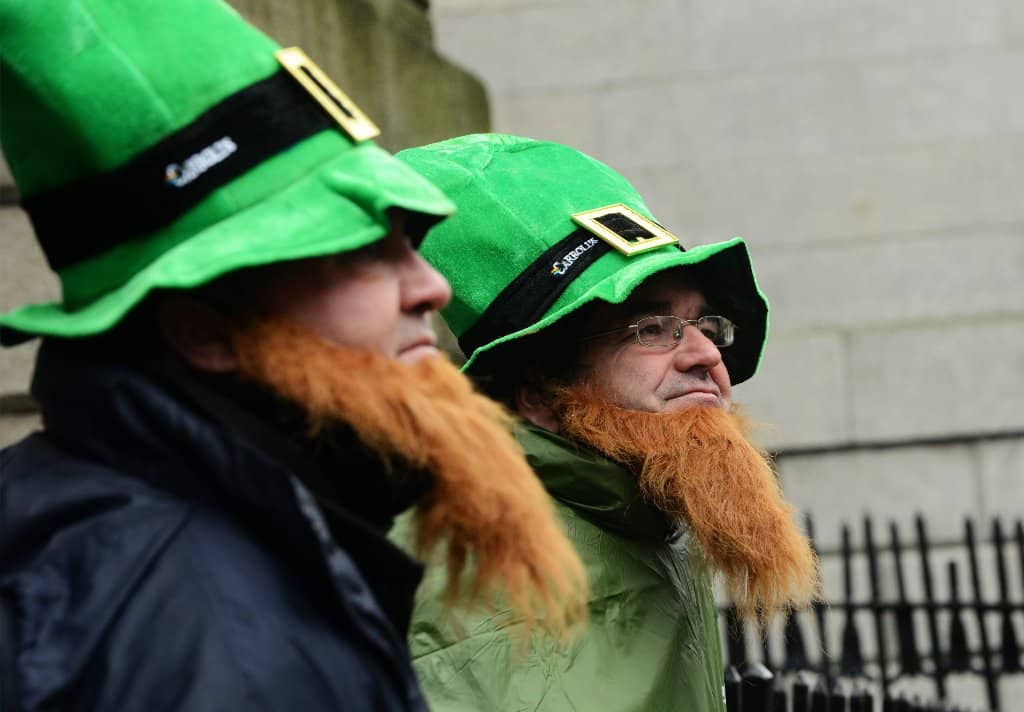7 Surprising Facts About St. Patrick’s Day

While St. Patrick’s Day is now associated with wearing green, parades (when they’re not cancelled) and beer, the holiday is grounded in history that dates back more than 1,500 years. The earliest known celebration was held on March 17, 1631, marking the anniversary of the death of St. Patrick in the 5th century. Learn more about the holiday’s history and how it evolved into the event it is today.
- The Real St. Patrick Was Born in Britain
Much of what is known about St. Patrick’s life has been interwoven with folklore and legend. Historians generally believe that St. Patrick, the patron saint of Ireland, was born in Britain (not Ireland) near the end of the 4th century. At age 16 he was kidnapped by Irish raiders and sold as a slave to a Celtic priest in Northern Ireland. After toiling for six years as a shepherd, he escaped back to Britain. He eventually returned to Ireland as a Christian missionary.
- There Were No Snakes Around for St. Patrick to Banish from Ireland
Among the legends associated with St. Patrick is that he stood atop an Irish hillside and banished snakes from Ireland—prompting all serpents to slither away into the sea. In fact, research suggests snakes never occupied the Emerald Isle in the first place. There are no signs of snakes in the country’s fossil record. And water has surrounded Ireland since the last glacial period. Before that, the region was covered in ice and would have been too cold for the reptiles.
- Leprechauns Are Likely Based on Celtic Fairies
The red-haired, green-clothed Leprechaun is commonly associated with St. Patrick’s Day. The original Irish name for these figures of folklore is “lobaircin,” meaning “small-bodied fellow.” Belief in leprechauns likely stems from Celtic belief in fairies— tiny men and women who could use their magical powers to serve good or evil. In Celtic folktales, leprechauns were cranky souls, responsible for mending the shoes of the other fairies.
- The Shamrock Was Considered a Sacred Plant
The shamrock, a three-leaf clover, has been associated with Ireland for centuries. It was called the “seamroy” by the Celts and was considered a sacred plant that symbolized the arrival of spring. According to legend, St. Patrick used the plant as a visual guide when explaining the Holy Trinity. By the 17th century, the shamrock had become a symbol of emerging Irish nationalism.
- The First St. Patrick’s Day Parade Was Held in America
While people in Ireland had celebrated St. Patrick since the 1600s, the tradition of a St. Patrick’s Day parade began in America and actually predates the founding of the United States.
Records show that a St. Patrick’s Day parade was held on March 17, 1601 in a Spanish colony in what is now St. Augustine, Florida. The parade, and a St. Patrick’s Day celebration a year earlier were organized by the Spanish Colony’s Irish vicar Ricardo Artur. More than a century later, homesick Irish soldiers serving in the English military marched in Boston in 1737 and in New York City on March 17. Enthusiasm for the St. Patrick’s Day parades in New York City, Boston and other early American cities only grew from there. In 2020, parades throughout the country, including in New York City and Boston were cancelled or postponed for the first time in decades due to the outbreak of the COVID-19 virus.
- The Irish Were Once Scorned in America
While Irish Americans are now proud to showcase their heritage, the Irish were not always celebrated by fellow Americans. Beginning in 1845, a devastating potato blight caused widespread hunger throughout Ireland. While approximately 1 million perished, another 2 million abandoned their land in the largest-single population movement of the 19th century. Most of the exiles—nearly a quarter of the Irish nation—came to the shores of the United States.
- Corned Beef and Cabbage Was an American Innovation
The meal that became a St. Patrick’s Day staple across the country—corned beef and cabbage—was an American innovation. While ham and cabbage were eaten in Ireland, corned beef offered a cheaper substitute for impoverished immigrants. Irish-Americans living in the slums of lower Manhattan in the late 19th century and early 20th, purchased leftover corned beef from ships returning from the tea trade in China. The Irish would boil the beef three times—the last time with cabbage—to remove some of the brine.
source: History.com

A videó megnézése után egészítsétek ki az érdekes információkat tartalmazó összegzést. A hiányzó helyekre maximum 2 szót írhattok.
source (video): Why we wear green on St. Patrick’s Day and other Irish traditions; Home of the Holidays; Youtube
Interesting pieces of information:
- _______used to be Ireland symbolic colour before the 1600s.
- The colour green is also meant to _____against leprechauns and fairies in the early 1700s. People in Ireland believed these mystical creatures would _______you if you didn’t wear the country’s favourite colour. Wearing green was said to make you _______to the mischievous creatures and making pinching you impossible.
- On St Patrick’s day the people of Ireland would indulge in as much food and ______as possible. They would mostly have non-alcoholic drinks as _____ were closed on the holiday as drinking during _______observed holidays was looked __________ .
- However, in the 70s _______companies began to target the holiday with ________causing the beer drinking tradition to spread but it is mainly observed in the US, not in Ireland.
keys/megoldások: 1. blue; 2. protect, pinch, invisible; 3. beverages, pubs, church, down on; 4. beer, advertising
Vocabulary
| to cancel | törölni |
| to ground | alapozni |
| to evolve | kialakulni |
| to interweave (interwove, interwoven) | összefonódni |
| to kidnap | elrabolni (embert) |
| raiders | fosztogatók/ rablók |
| to toil | erőlködni/ gürcölni |
| shepherd | pásztor |
| missionary | hittérítő |
| to stand atop | állni valami tetején |
| to banish from | elűzni valahonnan |
| to prompt | buzdítani |
| serpents | kígyók |
| to slither away | elsiklani/ menteni az irháját |
| to occupy | lakni |
| reptiles | hüllő |
| Leprechaun | kobold/ manó (írül) |
| to stem from | eredni/ származni valahonnan |
| cranky | félbolond/ házsártos |
| to mend | javítani |
| clover/ shamrock | lóhere/ lóhere (írül) |
| to consider | tartani/gondolni valaminek |
| sacred | szent |
| visual guide | vizuális/látható példa |
| emerging | feltörekvő/ fejlődő |
| to predate | előbb megtörténni |
| founding | alapítás |
| vicar | lelkész/ plébános |
| homesick | honvágyat érző |
| enthusiasm | lelkesedés |
| outbreak | kitörés |
| proud | büszke |
| to showcase | megmutatni |
| heritage | örökség |
| to postpone | elhalasztani |
| devastating | pusztító |
| hunger | éhség |
| to perish | elpusztulni |
| to abandon | cserben hagyni/ otthagyni |
| to exile | száműzni |
| corned beef | sózott marhahús |
| substitute for | helyettesítő |
| impoverished | elszegényedett |
| slums | szegénynegyedek |
| leftover | maradék |
| to remove | eltávolítani |
| brine | sós víz (páclé) |
| to secede from | elszakadni valamitől |
| harp | hárfa |
| to flaunt | hencegni |
| to get pinched | megcsípve lenni |
| to ward off | elhárítani |
| mischievous | csintalan/ pajkos |
| to brim with | csordultig tele van |
| booze | ital/ pia |
| Lent | Böjt |
| to put restrictions aside | félretenni a korlátozásokat |
| to honour | tisztelni |
| beverages | italok |
| to look down on | lenézni valakit |





